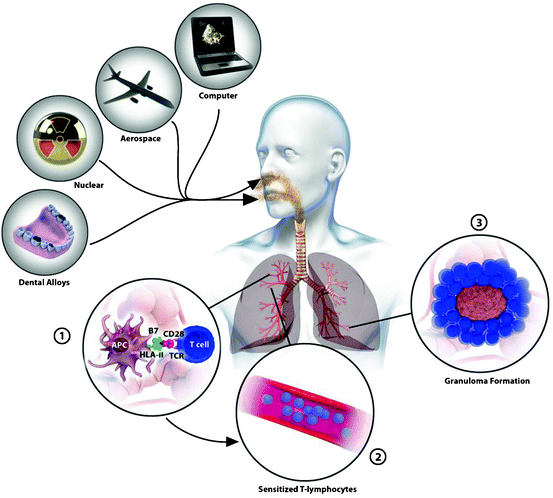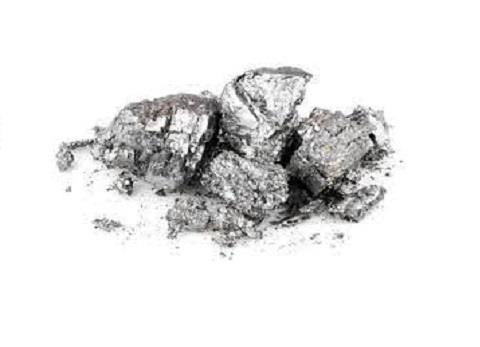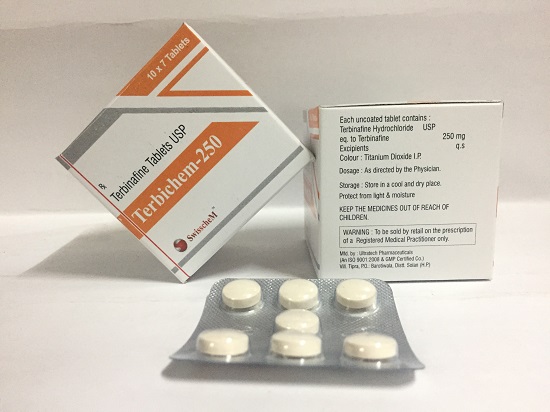The safety of Beryllium
Beryllium can elicit a strong cellular immune response in vivo. Chronic beryllium disease is an allergic reaction of the delayed type, in which beryllium appears to act as a hapten that binds to peptides on mucosal surfaces. In susceptible individuals, the beryllium-peptide complex initiates an immune response that may ultimately lead to granuloma formation in the pulmonary interstitium. The genotoxic effects of beryllium are based on the induction of DNA-protein complexes. Beryllium may inhibit the repair of DNA damage and act cooperatively to enhance the genotoxicity of other agents. The effects of beryllium on cellular metabolism and DNA replication, combined with its ability to promote an immune response with concomitant induction of reactive oxygen species (and oxidative DNA damage to the target tissue), may be sufficient to promote carcinogenesis in vivo. Beryllium is the least studied carcinogenic metal with respect to gene modulation. The mechanisms by which beryllium induces tumors are still obscure.
Effects on Humans.
The main adverse health effects of beryllium are respiratory effects and lung cancer following inhalation exposure, gastrointestinal effects following oral exposure, and skin effects following dermal exposure.
Respiratory Effects
The inhalation of beryllium can cause acute or chronic beryllium disease (berylliosis) depending on duration and level of exposure. Acute beryllium disease is usually observed after inhalation exposure to high beryllium concentrations (> 100 µg/m3). It is the result of the direct toxicity of water-soluble beryllium compounds. Acute beryllium disease has a short induction period and is usually resolved within a couple of months after termination of exposure. It is believed to be an inflammatory response to beryllium, and most regions of the respiratory tract are affected. Individuals who have previously suffered from acute beryllium disease have an elevated risk of lung cancer. Long-term exposure to relatively low beryllium concentrations (≥ 0.5 µg/m3) of soluble or insoluble beryllium compounds can result in chronic beryllium disease. The duration of this disease is more than one year, and the latency period may range from a few weeks to 20 years after exposure. Here, immunological mechanisms, such as an allergic reaction of a delayed-type, play a role.

Dermal Effects
Edematous papulovesicular dermatitis was observed in workers exposed to airborne beryllium compounds. Beryllium exposure may also cause a delayed hypersensitivity reaction in the skin. Skin granulomas from beryllium workers contained the same mononuclear infiltrates detected in the lungs.
Cardiovascular Effects
Severe cases of chronic beryllium disease can result in cor pulmonale, that is, the right heart ventricle hypertrophy. It is not likely that the cardiac effects are due to direct toxicity to the heart but rather are a response to impaired lung function.
Renal Effects
Kidney stones were observed to be associated with chronic beryllium disease.
Immunological and Lymphoreticular Effects
While acute beryllium is a chemical pneumonitis, chronic beryllium disease appears to be an immunological disease. Beryllium can induce cell-mediated immune responses. Beryllium-sensitized cells accumulate at sites of chronic beryllium disease, resulting in granulomas in the lungs. Nonspecific immunological findings in chronic beryllium disease include increased serum gamma globulin levels. The existence of specific antibodies to beryllium was reported.
Genotoxicity
Beryllium compounds yielded contradictory results in mutation or chromosomal aberration assays. Bacterial tests were largely negative; mammalian test systems showed evidence of beryllium-induced mutations, chromosomal aberrations, and cell transformation. No genotoxic effects (micronuclei and sister chromatid exchange) were observed in a group of beryl cutters. Thus, the results of genotoxicity assays of soluble beryllium compounds are inconsistent. Differences in the results depend on assay conditions, type of assay, and chemical form of beryllium. Soluble beryllium compounds appear to be weakly genotoxic. The carcinogenicity of beryllium is supported by the mutagenic potential in some of these studies.
Carcinogenicity
Increased mortality from lung cancer was found in epidemiological studies of workers in beryllium plants and an evaluation of the American Beryllium Case Register. A relationship between the duration of employment and lung cancer mortality was not determined. However, there was an association between death from lung cancer and an increasing time span since the beginning of employment or previous acute beryllium disease. Exposure to high levels of beryllium, which is regarded as the trigger for acute beryllium disease, is associated with a significantly increased risk of lung cancer. The data indicate that the carcinogenic effects occur mainly at high beryllium concentrations, which are no longer to be expected in workplaces today. The epidemiological data for the pulmonary carcinogenicity of beryllium and its inorganic compounds is also supported by the results of animal experiments.
);




